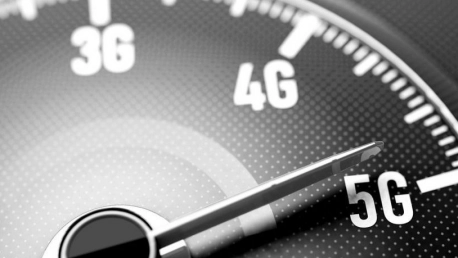Technology fans must be thrilled to hear that the world’s first 6G White Paper is available, and at the same time, China issued an official announcement stating that research on the next-generation network has already begun. While 5G networks are still being deployed around the world, it seems a bit early to talk about 6G. Or does it?
What Is 6G and When to Expect It
Sixth-generation wireless connectivity is the successor to 5G cellular technology. It will be able to use higher frequencies and provide substantially higher capacity and much lower latency. According to the experts, 6G is expected to support speeds of 1 terabyte per second (Tbps). Most specialists say that, although each cellular network generation takes approximately a decade to come to fruition, 6G efforts are at an early planning stage and the public could reasonably expect 2030 to be an achievable target.
While traditional applications, such as live multimedia streaming, will remain central to 6G, the key determinants of the system performance will be four new application domains, according to a white paper published by Virginia Tech. In the paper, researchers identified the four driving applications behind 6G as being: Multisensory XR Applications, Connected Robotics and Autonomous Systems, Wireless Brain-Computer Interactions, and Blockchain and Distributed Ledger Technologies.
Early Indications of 6G Development. The Race Is On
China Kicked Off 6G Research
China has recently announced the official launching of research and development work for 6G mobile networks. According to a statement by the Ministry of Science and Technology, two working groups will be set up to carry out this task. One group will consist of the government departments responsible for deciding the development of 6G. The other team made up of 37 universities, research institutes and enterprises, will handle the technical side of 6G and offer advice.
In September 2019, Huawei CEO Ren Zhengfei said that, while the company is working on 6G technology, this technology is still in an “early phase” and there’s “a long way to go” before commercialization.
First White Paper to Define the Service
A white paper published by The University of Oulu might be the first step in defining a service that won’t be available for at least 10 years. The document called “Key Drivers and Research Challenges for 6G Ubiquitous Wireless Intelligence” is based on the views that 70 experts shared during a special workshop at the first 6G Wireless Summit in Finnish Lapland in March 2019.
Although it might seem premature to discuss about 6G, as 5G networks are not yet fully established, some say this is the right time if the concept is to be turned into actual services by 2030. The authors of the white paper set the goal of 6G throughput at 1 Tbps per user. Experts say that getting to that level will take the utilization of the spectrum in the THz frequencies. Moreover, the paper makes a bold claim about 6G’s impact: “Smartphones are likely to be replaced by pervasive XR experiences through lightweight glasses delivering unprecedented resolution, frame rates, and dynamic range.”
Virginia Tech is Joining the 6G game
In a white paper titled “A Vision of 6G Wireless Systems: Applications, Trends, Technologies, and Open Research Problems,” Walid Saad, associate professor with the Bradley Department of Electrical and Computer Engineering at Virginia Tech, explores the future of wireless communication systems. According to the author, “6G will not be a mere exploration of more spectrum at high-frequency bands, but it will rather be a convergence of upcoming technological trends driven by exciting, underlying services”.
The First Steps of Opening Up Terahertz Wave Spectrum
In March 2019, the Federal Communications Commission adopted new rules to encourage the development of new communications technologies and expedite the deployment of new services in the spectrum above 95 GHz.
“To enable innovators and entrepreneurs to most readily access this spectrum, the Spectrum Horizons First Report and Order creates a new category of experimental licenses for use of frequencies between 95 GHz and 3 THz. These licenses will give innovators the flexibility to conduct experiments lasting up to 10 years, and to more easily market equipment during the experimental period”, according to the official statement.









